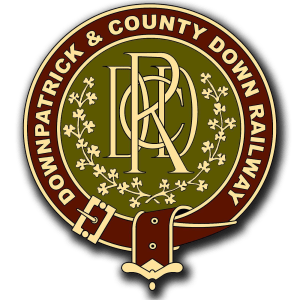| At a glance: | |
|---|---|
| Builder: | LMS NCC (York Road Works, Belfast) |
| Build date: | 1924 |
| Original company: | London, Midland & Scottish Railway (Northern Countries Committee) |
| Withdrawal date: | 1986 |
| Final company: | Northern Ireland Railways |
| Arrived at DCDR: | 1987 |
| Current status: | Stored |
| Current owner: | DCDR |
33 is a rare surviving example of an Irish brake van. Built by the NCC at their York Road works in the early 1920s, it would have been found on the back of goods trains all across the NCC network, from Belfast to Larne, Ballymena, Cookstown and destinations even further afield. It is a simple design, with a central room for the Guard containing a handbrake, and two open verandas at either end.
33 is a 25T brake van, referring to its ballast weight and thus the stopping power it held over a train. Goods trains were unbraked, meaning that only the locomotive at the front and the brake van at the rear could stop the train by the means of their handbrakes. Consequently they were limited to 25mph and as such tended to run at night to avoid getting in the way of passenger trains.
Eventually the NCC was absorbed into the Ulster Transport Authority, and 33 (now renumbered 2033) continued to be used by the new company. In 1965, a winch was fitted to one of its verandas to enable the van to carry out a new, more sombre role- Lifting the rails of the then-newly-closed ‘Derry Road’ which had connected Derry’s Foyle Road station to Portadown by way of Strabane, Omagh and Dungannon.
33 passed into NIR’s books following the dissolution of the UTA in 1968, and finished out its days in company service on goods and engineers trains as it was designed for. When DCDR went shopping for a brake van in 1987, 33 was one of two we looked at in York Road. Deciding between the two was easy, as 33 had vacuum brakes where its counterpart did not, as these were a legal requirement if we were to run the van in passenger service.
Arriving in Downpatrick in September 1987, 33 was immediately moved into the workshop as a top priority project, for it was to become our first passenger-carrying vehicle on our Santa trains in December that year. Though not exactly the last word in luxury or opulence, we were not yet at a stage where we could run proper carriages. As a result, this humble little brake van is responsible for kick-starting the thirty-plus years of passenger operations we have enjoyed since.
Gradually as we restored more and more carriages 33 reverted back to its intended use as a Guard’s van. It was last used in 2007, though has since been in storage as our carriage fleet has expanded to include multiple carriages with built-in Guard accommodation. Though DCDR may no longer have an operational need for a brake van, 33 is an important part of our railway’s history and we hope some day to include it as an exhibit in any potential expansion of our museum facilities.
